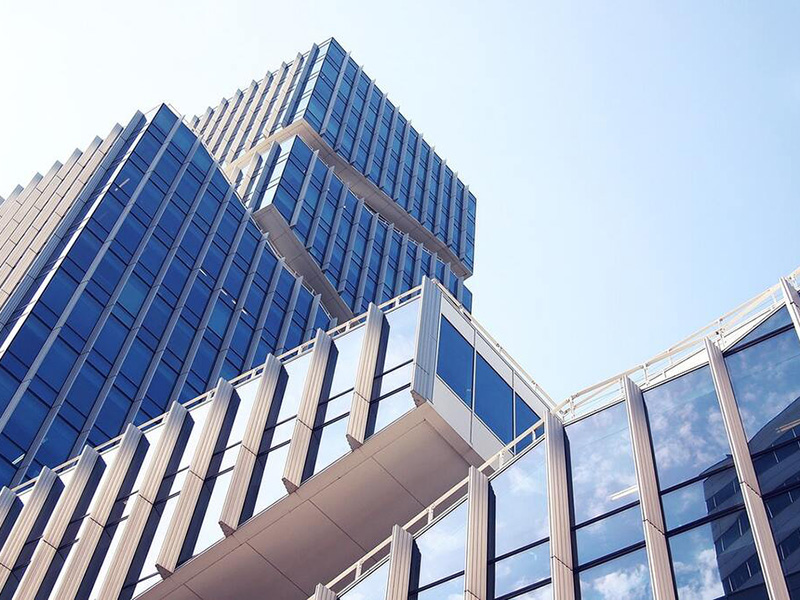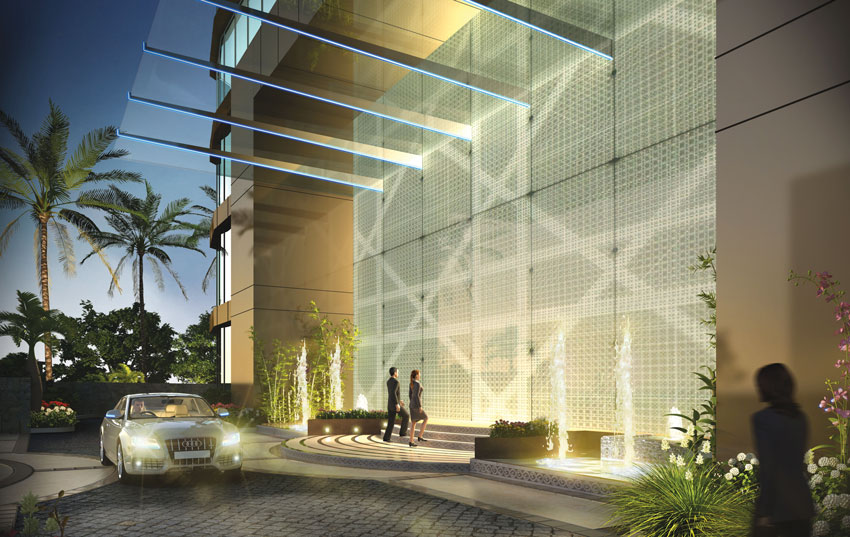
Kamal Meattle, CEO, Paharpur Business Centre & Software Technology Incubator Park, Nehru Place Greens, New Delhi
A normal day, for almost every Indian, starts with the worry of reaching their respective offices situated in sky-scrapers; spending the entire day in their cubicles, and then heading towards the concrete home every evening!
The rat race never ends. It is certain that we are all living in a concrete jungle.
However, in everyday's hustle and bustle, we have been neglecting our environment. Yes, the same environment that has given us everything to support our survival- a land to live, fresh air from trees, flora, fauna; the list is endless. Concretization has created a profound effect on all of us.
The sad part is that the conventional buildings do not really care for the environment. Instead, is one of the reasons for damaging it fiercely!
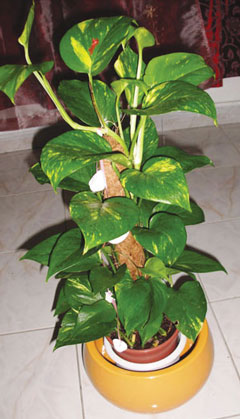
- 25% of world's population will live in urban areas by 2065.
- 75% of the 600 cities are in emerging economies. - Source: 'Urban World' by McKinsey.
- Cities represent 70% of CO2 emission worldwide.
By the year 2050, residential, institutional and commercial buildings are expected to consume as much as 38% of global energy production and to release about 3800 megatons of carbon in the atmosphere.
The only solution in sight seems to be - "Going Green."
Green Building is the way forward. The question is not of costs or technology. It is about creating public awareness of the benefits of Green buildings, as builders do not normally pay for operational costs of the buildings.
So, ECBC code for buildings must become mandatory.
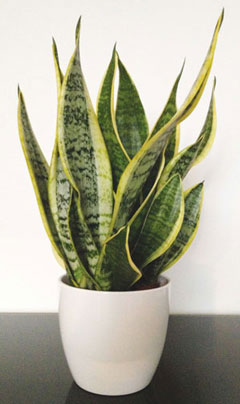
Use of white color roofs and facades and white color vehicles should be encouraged as they reflect light and heat. Paint roofs and west side of walls with a light reflecting white paint.
Clean and energy efficient technologies should be promoted while considering the usage of pumps, electric motors, lighting etc.
Only 5 star rated air conditioners, refrigerators, electric motors, transformers etc. should be put-in use.
One can even use alternative energy like wind, photovoltaic, bio-fuels, solar-heating of water in winter etc.
Regulatory measures are a must to promote energy efficiency in buildings.
High excise duty on energy inefficient products and zero VAT on exceptional energy efficient ones - i.e. 5 star, rated ones, should be charged.
A study reveals that two-third of India is yet to be built and this will happen in next 20 years. 60% of human population will be living in cities in next 15 years so we will need over 10 million new homes each year. In urban areas, there is a growing preference for working and living air-conditioned spaces; thus, the need for more energy, water and waste management in buildings of all sorts. The ecological impact of urbanization has become a major justification for a new development paradigm: that of sustainable cities. Urban planning should give importance to the environmental, social and economic consequences of every development.
Resources such as land and materials can be reused and recycled. Sustainable development demands a shift from conventional models to intelligent buildings that delivers a long-term growth so as to enhance the environment and social structures.
Principles of building sustainable urban areas should always follow; planning, designing, construction with refuse-reduce-recycle and reuse the elements of construction.
Every organization should move on to a path for sustainable development.
Paharpur Business Centre & Software Technology Incubator Park (PBCTM-STIP) proves that building sector - which takes up 40% of world's energy and 40% of world's natural resources at construction stage - can also go green.
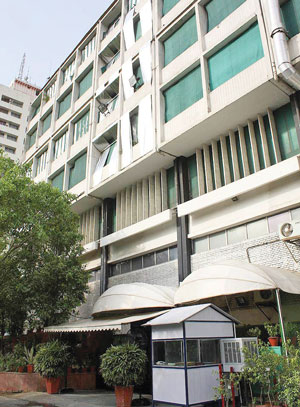
Where there is a will there is a way; the smart way is the tech way to save energy.
One can install Heat Recovery Wheels for transferring heat from the incoming air pulled-in from the outside ambient to the outgoing air from the building, while the coolness of the outgoing air is transferred to the incoming fresh air.
Similarly, air washer can also be installed to remove the Suspended Particulate Matter (SPM) from the fresh air and increase the moisture level in the air as a result of which the temperature of the incoming air drops down with this technology; the load on the chillers is reduced to a great extent.
Use of LED lights is another energy-efficient way to curb the consumption of energy and save it. LEDs use only ~8 watts of electricity (1/3rd to 1/30th of Incandescent or Compact Fluorescent Lights) and last many times longer than CFL's with no mercury.
Sensor equipment like sensor taps and lights too help in saving energy.
Offices can install motion sensor lights in the bathrooms and lobbies in the building in order to control misuse of electricity. These sensors automatically switch on the area lights as soon as they sense human presence.
Sensor taps help in reducing the usage of water as the stream and flow of water is within control.
A white - mesh can be stretched out on to the building façade and in the balconies to reduce direct solar heat gain. This can help in bringing down the temperature of a building, substantially, which in turn reduces the load on chillers.
Solar Films can be placed on windows to reduce the direct heat penetration into the building.
Indoor Air pollution is the 2nd highest killer in India. Indoor Air is generally 10 times more polluted than ambient air. Indoor Air pollution can lead to the possibilities of eye irritation, respiratory symptoms, lungs impairment, Asthma, headache, and more.
Plants inside office buildings are not just beautifiers but do wonders in terms of bringing down power costs. We at Paharpur Business Centre (PBC) use plants to combat pollutions and drastically improve the indoor air quality.
'We grow our own fresh air' TM with the help of more 1,200 Toxin removing plants which are grown indoors. These plants provide a healthier environment and increase blood oxygen levels to feel fresh and improve productivity.
PBC has a well equipped Indoor Air Quality (IAQ) department with lab facilities and a dedicated Indoor Air Quality Manager to monitor the system. Since 1996, IAQ results are being published regularly in www.pbcnet.com
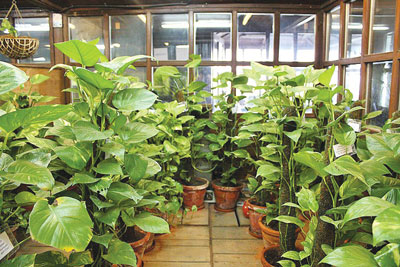
The occupants of the building are requested to be tested to check the spread of active Tuberculosis, for their own safety and of the fellow guests.
All housekeeping chemicals used in the building are Green Seal Certified.
Good Housekeeping practices are followed. The dust collected is measured and monitored.
Along with this, we also manage water and waste.
Some of the practices we follow are:
Drip irrigation: It saves water and fertilizer by allowing water to drip slowly to the roots of plants, either onto the soil surface or directly onto the root zone, through a network of valves, pipes, tubing, and emitters. The balconies have a large number of plants with drip irrigation, which help to reduce the heat as it increases moisture in the air. It also helps in keeping the air cool; hence, reduction in the use of air conditioners.
Soap free waste water for gardening: This not only helps in saving water but also in saving electricity (as pumps are not brought into use for gardening purpose).
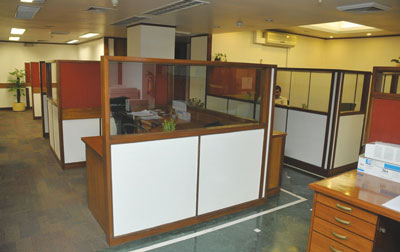
Waste is segregated at the point of its generation. We have separate bins for food, plastic, paper etc to manage waste. Organic waste management is done through Vermi-culture wherein we convert food waste into organic manure with the help of worms. Further, this manure is used for indoor plants.
We at PBC believe that sustainable development should always represent a balance between the goals of environmental protection, economic development, hence, leading to human progress. Water, Energy, Waste Management together with Indoor Air Quality are very important verticals in every building to make it sustainable as well as environment-friendly.
We need to stress more on such sustainable development than we have had in the past.
Go Green' and become more environment-friendly is catching pace.
However, more rigorous efforts are required to make it mainstream. And we can certainly start this revolution by adopting simple green measures in our homes and offices.
This would be an effective stride to a Green Revolution.










